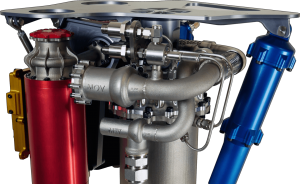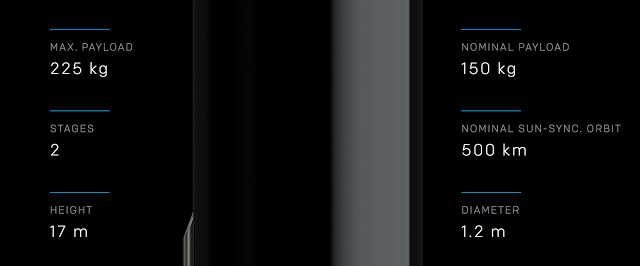US Government Authorizes Moon Express to Send Robotic Spacecraft with 3D Printed Components to the Moon in 2017
 Could it really be possible that within the next decade, you can actually book a flight to the moon? Naveen Jain, the co-founder of privately funded commercial space company Moon Express, thinks so. He sees moon exploration as part of a ten-year vision that could span anywhere from research facilities for Mars-bound technologies, to an exotic honeymoon vacation destination. What’s even more amazing is that you could fly to the moon on a rocket made with 3D printed parts!
Could it really be possible that within the next decade, you can actually book a flight to the moon? Naveen Jain, the co-founder of privately funded commercial space company Moon Express, thinks so. He sees moon exploration as part of a ten-year vision that could span anywhere from research facilities for Mars-bound technologies, to an exotic honeymoon vacation destination. What’s even more amazing is that you could fly to the moon on a rocket made with 3D printed parts!
 The California-based company submitted its historic application for a commercial lunar mission in early April of this year. After many in-depth consultations with the FAA, the White House, the State Department, NASA, and other federal agencies, Moon Express got the green light they were looking for. In mid-2016, the US government made a monumental policy decision and gave the company authorization for a maiden flight of its robotic spacecraft with 3D printed components. It will travel beyond Earth’s orbit and land on the moon’s surface in 2017. Just in case you may have forgotten, 2017 will be here in less than a month!
The California-based company submitted its historic application for a commercial lunar mission in early April of this year. After many in-depth consultations with the FAA, the White House, the State Department, NASA, and other federal agencies, Moon Express got the green light they were looking for. In mid-2016, the US government made a monumental policy decision and gave the company authorization for a maiden flight of its robotic spacecraft with 3D printed components. It will travel beyond Earth’s orbit and land on the moon’s surface in 2017. Just in case you may have forgotten, 2017 will be here in less than a month!
Until now, all commercial companies have been limited to operations within Earth’s orbit; only governments have sent missions to other worlds. So Moon Express is the first private company to receive approval for a commercial mission of lunar exploration and discovery. Jain is eyeing SpaceX for a launch partner, as the two companies have similar reasons for getting involved in private space exploration: multi-planetary habitation as a backup plan for the survival of humanity. If all goes well in the space tourism economy, Jain hopes that tourists will be able to book a flight to the moon by 2026 for $10,000 a seat, and stay in a hotel in orbit above the Earth.
But first things first: with a launch goal of 2017, Moon Express plans to send a rover to the lunar surface, to start searching for the best locations for future operations, like mining iron ore. The first rocket Moon Express plans to use for their historic private mission, their MX-1 lander (perched atop a Rocket Lab Electron booster), will cost about $5 million. But Jain expects the price to drop, with the same spacecraft budgeted to run $2 million within five years.
 So let’s go back to the Rocket Lab Electron booster for a minute. The New Zealand company’s Rutherford engine, which is capable of 4,600 lbs. of thrust and uses a battery-powered, electric turbo pump to drive its propulsion, is the first rocket to have all of its fundamental components 3D printed, including the injector, pumps, and main propellant valves. It takes just three days to print, and the company is ready to take it to the moon.
So let’s go back to the Rocket Lab Electron booster for a minute. The New Zealand company’s Rutherford engine, which is capable of 4,600 lbs. of thrust and uses a battery-powered, electric turbo pump to drive its propulsion, is the first rocket to have all of its fundamental components 3D printed, including the injector, pumps, and main propellant valves. It takes just three days to print, and the company is ready to take it to the moon.
For the first stage of the 20-meter carbon composite Electron rocket‘s journey into space, nine Rutherford engines will be used, with an entirely new propulsion cycle: its high-performance electric propellant pumps reduce the overall mass and replace clunky hardware with lightweight software. For the second stage, a special variation of the Rutherford will be used, made to survive the vacuum of space travel. Though it’s lightweight, the Electron rocket is capable of delivering 100kg payloads to a 500km sun-synchronous orbit (in lower Earth orbits, that’s the same as 400kg payloads).
With their 2017 lunar mission, Moon Express will compete for the Google Lunar XPrize, a $20 million race to be the first team to put a robotic lander on the moon, and drive it 1,640 feet while beaming HD video back to Earth. Second place is worth $5 million, and another $5 million awarded for achieving various goals. Discuss in the Moon Express forum at 3DPB.com.
[Sources: Moon Express; Next Big Future]Subscribe to Our Email Newsletter
Stay up-to-date on all the latest news from the 3D printing industry and receive information and offers from third party vendors.
You May Also Like
3D Printing Financials: Fathom Struggles in Financial Quicksand During Critical Transition
Facing a year of key transitions and financial pressures, Fathom (Nasdaq: FTHM) has filed its annual report for 2023 with the U.S. Securities and Exchange Commission (SEC). The document outlines...
Latest Earnings Overview for Australian 3D Printing Firms Titomic and AML3D
Australian 3D printing manufacturing firms Titomic (ASX: TTT) and AML3D (ASX: AL3) reported their financial results for the period from July to December 2023, marking the first half of their...
3D Printing Webinar and Event Roundup: April 7, 2024
Webinars and events in the 3D printing industry are picking back up this week! Sea-Air-Space is coming to Maryland, and SAE International is sponsoring a 3D Systems webinar about 3D...
3D Printing Financials: Unpacking Farsoon and BLT’s 2023 Performance
In the Chinese 3D printing industry, two companies, Farsoon (SHA: 688433) and Bright Laser Technologies, or BLT (SHA: 688333), have recently unveiled their full-year earnings for 2023. Farsoon reported increases...

































